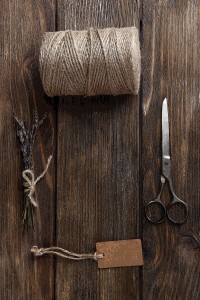 More than 200 years ago, a doctor wrote, “Many an artisan has looked at his craft as a means to support life and raise a family, but all he has got from it is some deadly disease, with the result that he has departed this life cursing the craft to which he has applied himself.”
More than 200 years ago, a doctor wrote, “Many an artisan has looked at his craft as a means to support life and raise a family, but all he has got from it is some deadly disease, with the result that he has departed this life cursing the craft to which he has applied himself.”
Things have improved, right? Actually, only forty years ago, jewelers used asbestos fibers, cadmium solder (now banned) and carcinogenic solvents including tri-chloroethylene, benzene and carbon tetrachloride, often without suitable ventilation. Fortunately, in recent decades, there’s been progress in crafts safety standards, much of it led by crafts artists themselves.
It goes without saying that it is absolutely essential for your studio to maintain adequate safety standards. Not only can it affect your short and long-term health, but ignoring these standards may violate the law and lead to lawsuits by employees and neighbors.
[By the way, the Craft Emergency Relief Fund provides helpful information about surviving studio disasters.]
In 1998, Engineer Milt Fischbein wrote four basic principles for maintaining studio safety:
- understand the hazards associated with each chemical, tool and machine in your studio
- design your studio to minimize hazards
- use safe procedures for each of your work processes, and
- make absolutely sure that each safety procedure is followed and that no shortcuts are taken.
Chances are good that you are already aware of the recognized risks within your field—risks that come with the territory when working with and around polishing machines, rolling mills, infrared radiation, dermatitis-causing dust, propane tanks and so on. Determining what is right for your crafts business requires research. Before you snap on your safety goggles (with side shields), review the material below to best identify dangers and prevent injuries:
Material Data Safety Sheets. One key to maintaining a safe studio is to familiarize yourself with product labels, and if possible with the Material Safety Data Sheets (MSDS) that are issued by the chemical makers or product manufacturers. This information can be found on the web at these sites:
Information is also usually available at the source of your supply, or you can write to the manufacturer or check their website. The MSDS lists hazardous ingredients, short and long-term effects of exposure, flammability, precautions and recommended protective gear.
Safety Considerations
- Ventilation and PPMs. Safety-conscious crafts artists can lower the exposure limits created by toxic fumes by choosing the right chemicals and properly ventilating the workspace. Keep in mind that exposure varies depending on the individual—for example, children and pregnant women may be more susceptible to toxics. You can find exposure limits for most common crafts supplies via the MSDS (above). Exposure standards are expressed in parts per million (PPMs). Higher PPM limits are usually better—for example, you are better off using odorless paint thinner (300 ppm) than mineral spirits (100 ppm). Ventilation is key to a healthier environment because ventilated air dilutes the toxicity in an evaporated chemical.
- Volatility and Flashpoints. It may seem obvious but we’ll say it anyway: to avoid fire dangers, keep solvents, welding gases, and oxidizing chemicals sealed when not in use. These substances are considered volatile. They mix easily with the air to create an explosive combo of air and vapors. And they have a low flashpoint (the temperature at which the substance ignites—the lower the flashpoint, the more danger). Ideally you should use low volatility, high flashpoint substances.
- Foundries and Kilns. It’s best to wear eye protection and keep your distance, when possible, from devices and processes that generate high heat. For example, kilns and glass-blowing processes generate infrared radiation. Devices such as carbon-arc lighting generate ultraviolet radiation. Prolonged exposure to both can lead to a variety of ailments.
- Noise Injuries. If you have a noisy workspace, don’t wait: start using sonic reducing headphones immediately and if possible, isolate noise producing devices within your studio. Excessive noise can cause a range of hearing problems the worst of which – tinnitus – is permanent.
- Physical Injuries. Repetitive stress injuries – doing the same motion over and over – can lead to many physical ailments. Poor posture – for example, stooping to use a spinning wheel – can result in back and other muscular-skeletal ailments.
Much of this material is derived from an online guide, Safety Guide for Art Studios by Thomas Ouimet.
